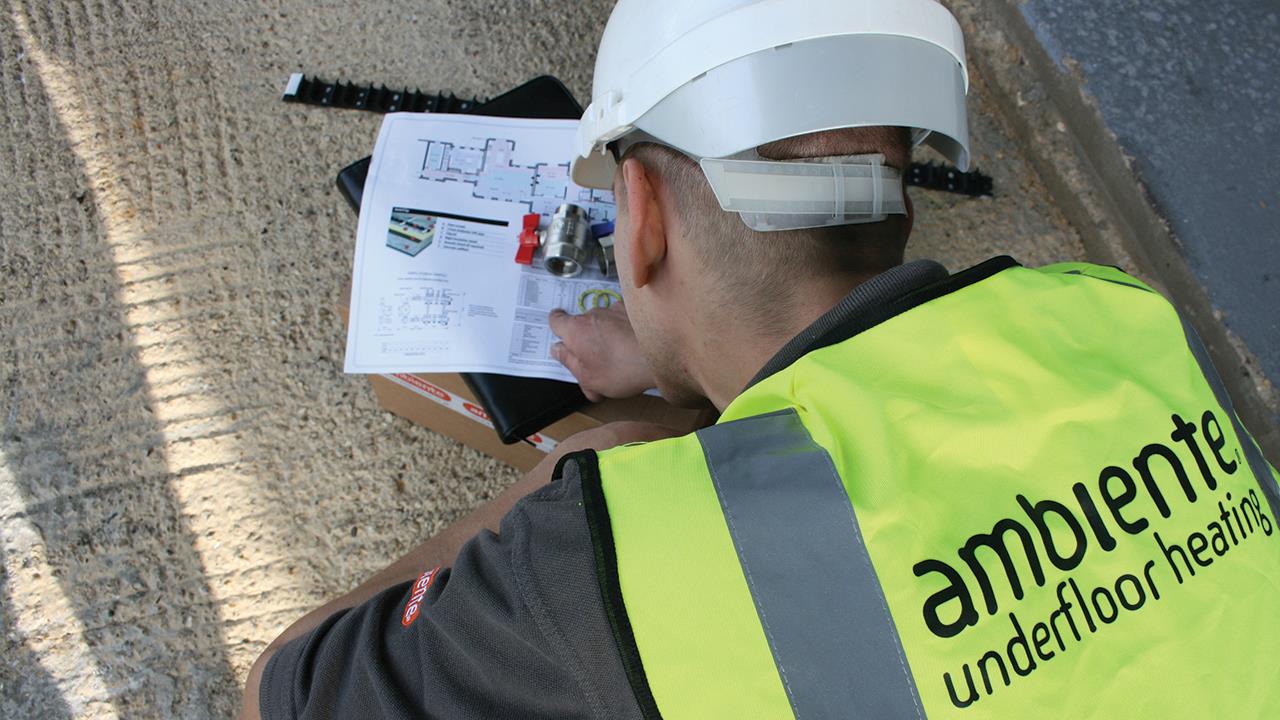

Controls are integral to the optimal functioning of underfloor heating systems and play a crucial role in regulating and maintaining the temperature within a space equipped with such system.
While it is now a regulatory requirement to include controls and zoning to some underfloor heating systems, it is still often an undervalued element of the system design.
Following the Building Regs
As per the regulations and Part L update of 2022, heating systems in all newly built homes and those undergoing major renovation must demonstrate a maximum flow temperature of 55°C.
In addition, whatever heating system selected must allow each room to be zoned to avoid wastage of energy in unused areas. Zoning also increases the comfort levels for customers in open plan spaces, for example where the kitchen area would benefit from being cooler than the dining area.
Specification choices
There is a wide range of controls available on the market, so the best place to start is considering the individual project conditions and what is possible installation-wise.
The main consideration is whether the site will allow for new cabling, or whether wireless options are a better solution.
In a newbuild scenario, hard-wired products are the best solution, and the cabling for them can be integrated easily from the beginning of the build.
However, running cabling might not be an option for a retrofit or refurbishment project. In these scenarios, wireless controls are the better solution, offering both ease of installation and straightforward maintenance.
Whether wired or wireless controls are selected, using the same solution throughout the property is always better to ease usability and connectivity.
The next step – the decision of whether they would prefer a seven-day programmable or smartphone-controlled thermostat – is best left to the customer as, ultimately, it will be down to them to control the system day to day.
While both allow users to create personalised programs to maximise comfort and efficiency, smartphone control provides extra convenience.
As such, installers can add value for consumers by understanding their wider needs and selecting the right products to create a cost-effective, entry level smart home.
Switching between lots of apps can lead to customer frustration. It is therefore better to consider options that are compatible with other products so they can all be controlled via one app.
Lastly, if the floor finish selected is sensitive to high temperatures, such as vinyl or natural wood flooring, using a floor sensor is important to protect the floor from overheating.
A hard-wired thermostat should be used when a floor probe is required – as such, floor coverings should be a key consideration in the initial project discussions to ensure the final system specification suits every requirement.
Installation best practice
When planning the location of, and installing, the selected controls, precise positioning within the room is crucial, just like with other thermostats. As such, a few key considerations should be taken into account to ensure best performance and accuracy are achieved.
For any underfloor heating thermostat to deliver precise temperature readings, it is essential for it to be positioned in a location where it can receive unrestricted airflow from the room where it sits. This is where wireless controls can become especially useful for retrofit projects.
The controls must also be kept away from other heat sources, such as gas or electric fires and wood-burning stoves. These, together with draughts or direct sunlight, can compromise the accuracy of the information received by the underfloor heating system.
When the optimum positions have been identified, it is also worth checking with the customer that any furniture they plan on adding to the room, such as bookshelves or dressers, won’t obstruct access to the thermostat or hinder its performance.
The finishing touch
In the case of homeowners transitioning from traditional radiators to underfloor heating, it is important for you to help them get up to speed with their new system controls.
Working with suppliers who can provide end-user guides and support is a bonus, and allows customers to maximise every benefit they may gain from their new system.
If you'd like to keep up-to-date with the latest developments in the heating and plumbing industry, why not subscribe to our weekly newsletters? Just click the button below and you can ensure all the latest industry news and new product information lands in your inbox every week.